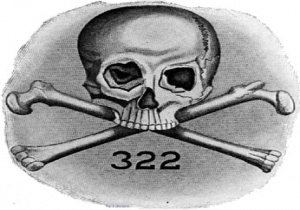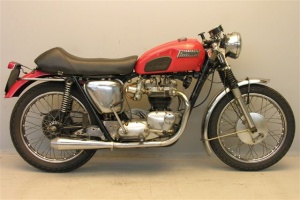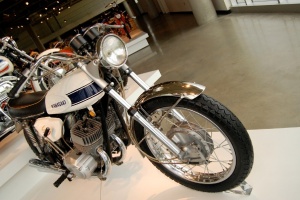Difference between revisions of "Chapter 9"
Redbarnlane (Talk | contribs) (Timeline) |
Redbarnlane (Talk | contribs) (Timeline) |
||
| Line 65: | Line 65: | ||
'''1949 Mercury woodie'''<br /> | '''1949 Mercury woodie'''<br /> | ||
''The Mod Squad'' drove a Mercury woodie, either a '49 or '50. | ''The Mod Squad'' drove a Mercury woodie, either a '49 or '50. | ||
| + | |||
| + | ==Page 134== | ||
| + | '''no longer saw the headlights'''<br> | ||
| + | Evening, the ninth day of the narrative, Wednesday, April 1, 1970. <br> | ||
==Page 138== | ==Page 138== | ||
Revision as of 10:45, 18 September 2009
- Please keep these annotations SPOILER-FREE by not revealing information from later pages in the novel.
Page numbers refer to editions with 369 pages, where the story begins on page 1. Not sure if there are other editions with variant pagination. Please let us know otherwise.
Contents
Page 124
headed up to Topanga that afternoon
Afternoon, the ninth day of the narrative, Wednesday, April 1, 1970.
Stone Turntable
The name is presumably intended to be a jokey reference to Rolling Stone: a stone turntable being not a rolling stone, but a rotating one.
Page 125
Jurgensen's
Jurgensen's was an upscale, gourmet grocery store with locations in Beverly Hills, Pasadena, and throughout greater LA.
Hokusai's famous Great Wave off Kanagawa
a famous woodblock print. Wikipedia

Page 126
uncountableth
In mathematics, "uncountable" is used to describe the size of infinite sets larger than the set of natural numbers. Pynchon's use of the word here is deliberately oxymoronic. See also the reference to George Cantor further in the same paragraph.
the Boards...
As the surf band that makes it big, the Boards suggest the Beach Boys. Pynchon himself once visited the home of Brian Wilson in Beverly Hills. See Pynchon and Brian Wilson. Perhaps this chapter drew some inspiration from that visit?
Cantor's Delicatessen
Georg Cantor (1845-1918) was a German mathematician who pioneered the subject of set theory, now at the foundation of all modern mathematics. He proved that there are different sizes of infinity - for example, the set of natural numbers is smaller than the set of real numbers, though both sets are infinite. The name of the restaurant is a play on the real Canter's Deli in Los Angeles, established 1931.
Page 128
Dark Shadows. . . The Collins family . . . parallel time
Dark Shadows was an innovative TV show in the late 1960's and early 70's that focuses on the Collins family. The show included many Gothic elements, including vampires, zombies, and witches. It also played with time travel and parallel universes in which the same character would be played by different actors or the same actor would play different characters.
parallel time
This paragraph may be a coded reference to Pynchon's own Against the Day and its reception. Against the Day features parallel universes/time (?) and confounded readers nation- (and world-)wide. This interpretation may be a stretch. I dunno. Bleakhaus 22:59, 9 August 2009 (PDT)
Hanon
Hanon was a 19th-century French piano teacher and composer. He's most famous for developing exercises for piano students.
The exercises, rather than the guy who wrote them, are the primary focus of the reference. These are the basic finger exercises that almost everyone who took piano played for some period, and almost everyone who has had a family member who took piano listend to over and over for seemingly endless periods. They're basically short, hurried, unmelodic scales that work up and down the keyboard without any regard for key. The more advanced exercises feature 4th- and 5th-finger repetitions and trills that are about as pleasant to listen to as a skipping record. They would sound particularly silly on a portable Farfisa, and practicing them on a Farfisa would be strange, as the instrument, unlike a piano, has soft organ keys with virtually no action.
An mp3 of Hanon's Exercise 1 played on a Farfisa (actually a synthesizer emulating a Farfisa).
Farfisa
One of the first electric keyboards/organs used in rock and roll. More here.
Page 130
George Formby
George Formby, Jr. performed "Leaning on a Lamppost" (written by Noel Gay) which Herman's Hermits covered. Tyrone Slothrop, protagonist of Gravity's Rainbow is described as "sort of an American George Formby, if you can imagine such a thing." Obvious influence on "The Bonzo Dog Band." Here's a video of George Formby singing Leaning On A Lamp Post.
Page 131
Donna Lee
Donna Lee, way more than Coy's usual 1 or 2 note solos.
abrazo
Spanish for hug.
Page 132
third ballet position
here
louche
Of questionable taste or morality; decadent.
Page 133

1949 Mercury woodie
The Mod Squad drove a Mercury woodie, either a '49 or '50.
Page 134
no longer saw the headlights
Evening, the ninth day of the narrative, Wednesday, April 1, 1970.
Page 138
van Houten, Leslie
b. 1949. A former member of Charles Manson's "Family" who was convicted of the murders of Leno and Rosemary LaBianca. She remains imprisoned at the California Institution for Women in Chino, San Bernadino County, California.
Page 140
--not logical, Captain
Star Trek reference, a phrase often spoken by Spock to Kirk.
Page 141
Triumph Bonneville T120
Kawasaki Mach III

Page 143
SS396
Photo
Page 144
esta gente no sabe nada
Spanish for "these people know nothing."
Page 145
hijo de puta
Spanish for "son of a bitch."
otra vez
Spanish for "again/one more time."
Page 146
"Cootie food!"
What Doc means is "le coup de foudre," aka "bolt of lightning." This echos Reef's 'rounder Italian'; "Say surly topple!" he would scream..." (page 889) from Against the Day.
The English meaning, if it has one, and the explanation for Clancy Charlock's response to Doc, is unclear. It may perhaps refer to the childish fear of being infected by a sort of imaginary germ borne by the opposite sex and known as "cooties," which - possibly - makes a member of the opposite sex whom you touch "cootie food." Or, it could just be a very idiosyncratic reference to oral sex.
Another possibility is that Doc, whose French is likely weaker than his Spanish, memorized the phrase phonetically as "cootie food", since he would not have known the spelling when it was told to him. Assuming Clancy understands French, or at least this particular idiom, her reply is fairly natural.
The phrase is apparently used - at least in the South, and not commonly - to refer to unappetizing or unclean food.
Cooties is slang for crabs or lice.
Page 147
Now, Voyager (1942)
from Wikipedia: Now, Voyager is a 1942 American drama film directed by Irving Rapper. The screenplay by Casey Robinson is based on the 1941 novel of the same name by Olive Higgins Prouty, who borrowed her title from a line in the Walt Whitman poem "The Untold Want," which reads in its entirety, "The untold want by life and land ne'er granted, / Now voyager sail thou forth to seek and find." Bette Davis' portrayal garnered her an Academy Award nomination, and the film continues to be popular not only due to its star power but also the "emotional crescendos" engendered in the storyline.
The film includes the line: "Oh, Jerry, don't let's ask for the moon... we have the stars."
The film's romantic smoke sequence, repeated during the film and much parodied, featured Paul Henried placing two cigarettes in his lips, lighting them both, then handing one to Bette Davis. YouTube
Page 148
Zubin Mehta
A famous conductor, Zubin Mehta was the Music Director of the Los Angeles Philharmonic, 1962-1978. [1]
massé shots
In billiards, a massé shot is when a player strikes a ball with the cue at a sharp angle and causes the ball to curve drastically or even eventually reverse direction. Here's an example. Some pool halls (like this one) forbid this kind of shot because it often leads to scratching or tearing of the felt.
Page 153
"Happy Trails to You"
Besides the reference to Roy Roger's theme song, this phrase is a favorite double entendre among those who use psychedelic drugs. "Acid trails" are a common hallucination produced by LSD.
| Chapter 1 pp. 1-18 |
Chapter 2 pp. 19-45 |
Chapter 3 pp. 46-49 |
Chapter 4 pp. 50-54 |
Chapter 5 pp. 55-67 |
| Chapter 6 pp. 68-88 |
Chapter 7 pp. 89-110 |
Chapter 8 pp. 111-123 |
Chapter 9 pp. 124-153 |
Chapter 10 pp. 154-162 |
| Chapter 11 pp. 163-185 |
Chapter 12 pp. 186-206 |
Chapter 13 pp. 207-234 |
Chapter 14 pp. 235-255 |
Chapter 15 pp. 256-274 |
| Chapter 16 pp. 275-295 |
Chapter 17 pp. 296-314 |
Chapter 18 pp. 315-342 |
Chapter 19 pp. 343-350 |
Chapter 20 pp. 351-363 |
| Chapter 21 pp. 364-369 |